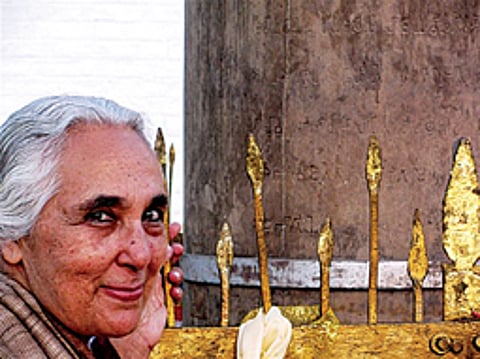Lumbini with Romila Didi
The human mind craves travel, be it through geographical terrain or through time. Take a train, trek or bicycle, and you suddenly find yourself in different surroundings. This translocation fulfils the intellect's craving for new perspectives, contexts, views and interactions. The same holds true for time travel, fulfilled through a scholar's recollection of history, or by contemporary presentations of facts and observations saved over the centuries, such as by the founder-emperor Babur in his Baburnama. Sadly, not everyone was a Babur, with superior observation skills and the wherewithal to record. So, we poor souls of the 21st century are left to ruminations and conjecture – unless the historian comes along to bring the past alive.
It is a matter of fascination, the answer to the question, 'What was the terrain of the Ganga plain like in the time of the Buddha?' When you fly over the region north of the Ganga, from Purnea to Gorakhpur to Faridabad, the entire expanse is a patchwork quilt of landholdings. But back then, most of this would have been jungle, punctuated – as seen from the Pushpak Vimana – by forest clearings, villages, towns and some agricultural areas. The Indus Valley seals indicate that the habitat of the one-horned rhinoceros extended to what is today a desertified Sindh, which indicates the jungle was once lapping at the foothills of Balochistan. Human intervention or climate change might have changed that terrain aeons ago, but the Ganga region – undifferentiated, incidentally, from the Indus watershed by any significant ridgeline – would have remained largely wild.

